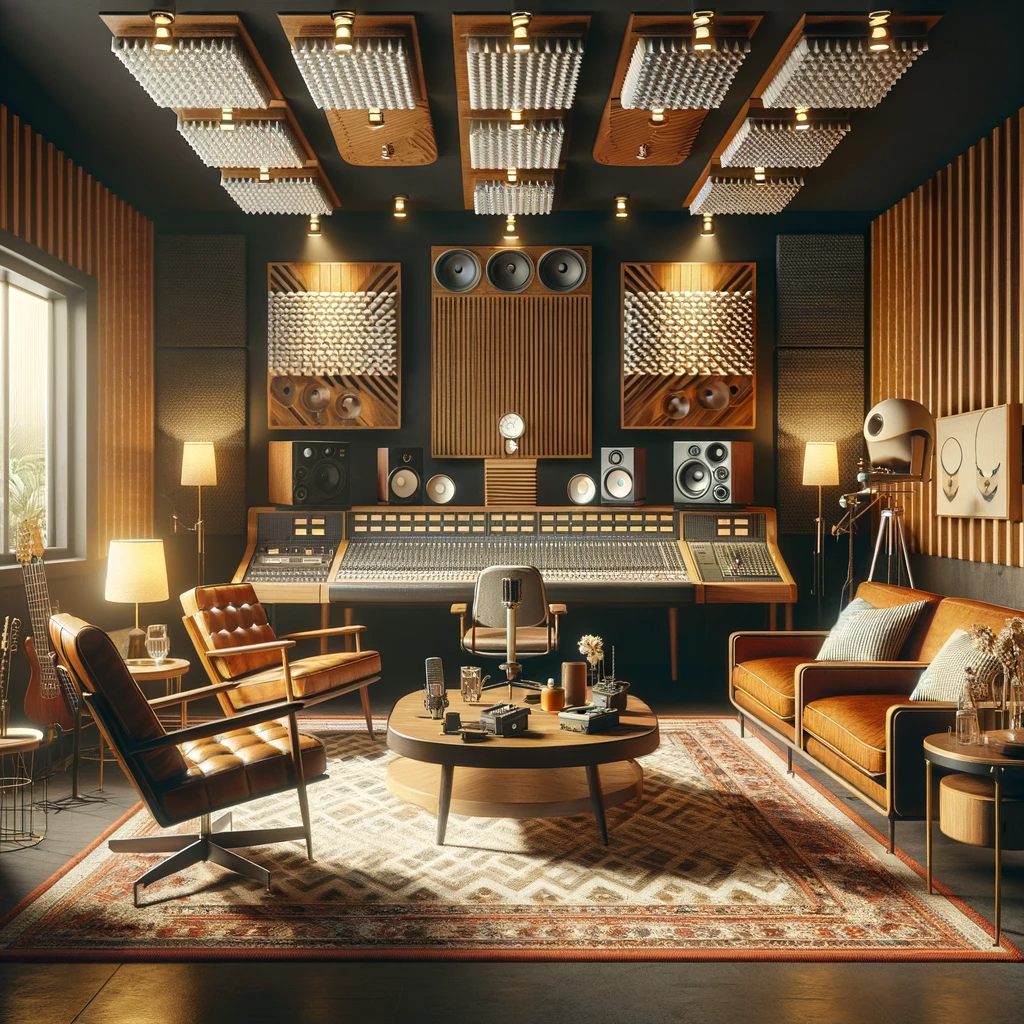Harmonising Acoustics and Aesthetics: Striking the Perfect Balance in Studio Sound Treatment
In the world of music production, the design and acoustics of a recording studio play a pivotal role in the quality of the recorded sound. However, an often-overlooked aspect is the balance between sound treatment and the studio’s vibe or aesthetic appeal. This balance is not just about achieving technical excellence, but also about fostering a creative sanctuary for artists.
Sound Treatment: The Technical Foundation
The primary objective of sound treatment in a studio is to control sound reflections and reverberations. This is crucial for achieving clear and precise recordings. Materials such as acoustic foam, bass traps, and diffusers are commonly used to absorb or scatter sound waves, preventing muddy sound caused by echoes and reverberations. The goal is to create a sonically neutral space that accurately captures the intended sound. Whether or not any space actually achieves this, is a topic that’s up for much debate.
While technical perfection is essential, the vibe or atmosphere of a studio is equally important. A studio should be a haven where artists feel inspired and comfortable. This involves considering elements like lighting, decor, and layout. A warm, inviting ambiance can significantly enhance the creative process. Personal touches, artwork, or even a particular color scheme can transform a sterile space into a breeding ground for artistic expression.
Striking the Balance
Achieving a balance between acoustics and aesthetics requires a thoughtful approach. One must consider the functional aspects of sound treatment without compromising the studio’s character. For instance, acoustic panels can be designed with aesthetically pleasing fabrics or prints. Strategic placement of these panels can serve both acoustic and visual purposes. Similarly, furniture and equipment can be arranged to optimize sound quality while maintaining a comfortable and visually appealing environment.
A versatile studio space that can adapt to different artists and genres is invaluable. Implementing adjustable lighting, movable acoustic panels, or modular furniture can cater to various preferences, enhancing the studio’s appeal to a diverse range of artists. This adaptability ensures that the studio remains technically sound while offering a customisable vibe for each session.
At the end of the day, the art of recording studio design lies in the harmony between sound treatment and ‘vibe’. A studio that excels in both aspects not only produces high-quality recordings but also becomes a cherished creative space for artists. By acknowledging the importance of this balance, studio owners and sound engineers can create environments that are not just acoustically enhanced but also rich in inspiration and comfort.
